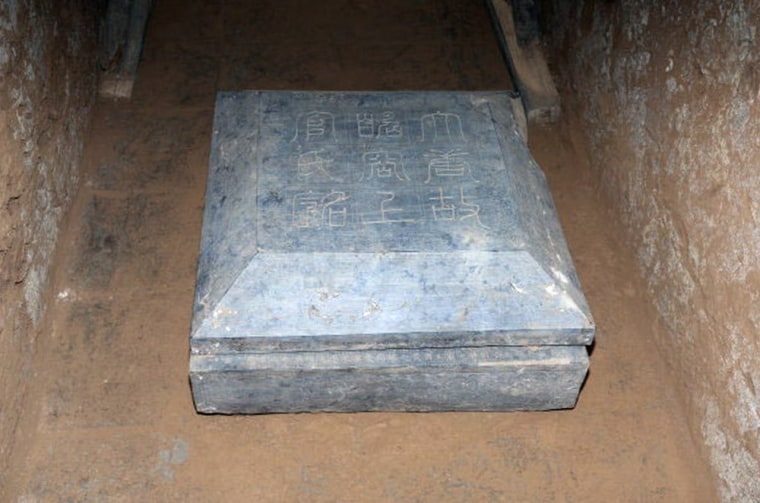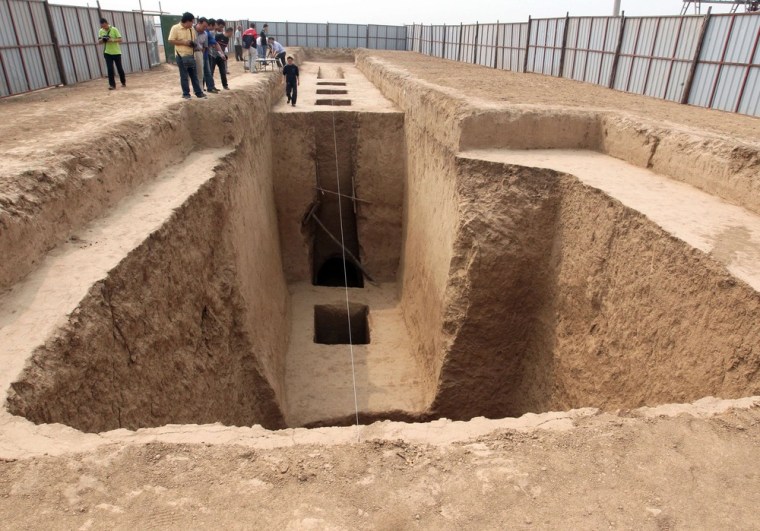The 1,300-year-old tomb of one of ancient China's most influential women has been found in Shaanxi Province, adding another chapter to a soap-opera tale of slavery, redemption, intrigue and beheading.
Archaeologists deciphered the epitaph on a marker to determine that it came from the tomb of Shangguan Wan'er, an influential 7th-century politician and poet during the reign of Empress Wu Zetian (690-705), China's official Xinhua news agency reported.
The badly damaged underground tomb was found near Xi'an Xianyang International Airport, according to Chinese news reports. Only a few burial accessories were found, including a complement of statues depicting riders on horses.
The latest find echoed the decades-old discovery of thousands of terracotta warriors and horses buried in Xi'an, as a funerary tribute to Qin Shihuang, China's first emperor. Those figures date to the 3rd century B.C.

Shangguan Wan'er (664-710) was Empress Wu's secretary, and came to be known as the "female prime minister." According to Chinese historical accounts, her father and grandfather were killed because of their opposition to Empress Wu Zetian's rise, and Shangguan Wan'er herself was forced into slavery. However, she became proficient at poetry and statecraft, and eventually impressed the empress so much that she was appointed secretary.
After a series of political twists and romantic liaisons worthy of a TV series, Shangguan Wan'er was implicated in a coup against one of Empress Wu Zetian's successors — and beheaded as a result.
The BBC cited reports suggesting that the damage to the poet-politician's tomb may have been done intentionally by ancient Chinese officials. "The roof had completely collapsed, the four walls were damaged, and all the tiles of the floor had been lifted up," Geng Qinggang, an archaeology research associate in Shaanxi, was quoted as saying.
If Shangguan Wan'er died in such shame, why would she have such an extensive tomb? And what happened to her body?
"I presume Shangguan Wan'er's tomb might have been built during her lifetime," Yu Gengzhe, a history professor at Shaanxi Normal University who specializes in the Tang Dynasty, told China News. "She died and was hastily buried, and the graves were officially destroyed."
Archaeologists said no coffin, complete bones or treasures have been found — but they are continuing to explore and clean the tomb.

More about Chinese archaeology:
- Ancient Chinese murals saved from tomb robbers
- Chinese tyrant's 1,400-year-old tomb may have been found
- 5,000-year-old primitive writing stirs debate in China
Alan Boyle is NBCNews.com's science editor. Connect with the Cosmic Log community by "liking" the NBC News Science Facebook page, following @b0yle on Twitter and adding +Alan Boyle to your Google+ circles. To keep up with NBCNews.com's stories about science and space, sign up for the Tech & Science newsletter, delivered to your email in-box every weekday. You can also check out "The Case for Pluto," my book about the controversial dwarf planet and the search for new worlds.